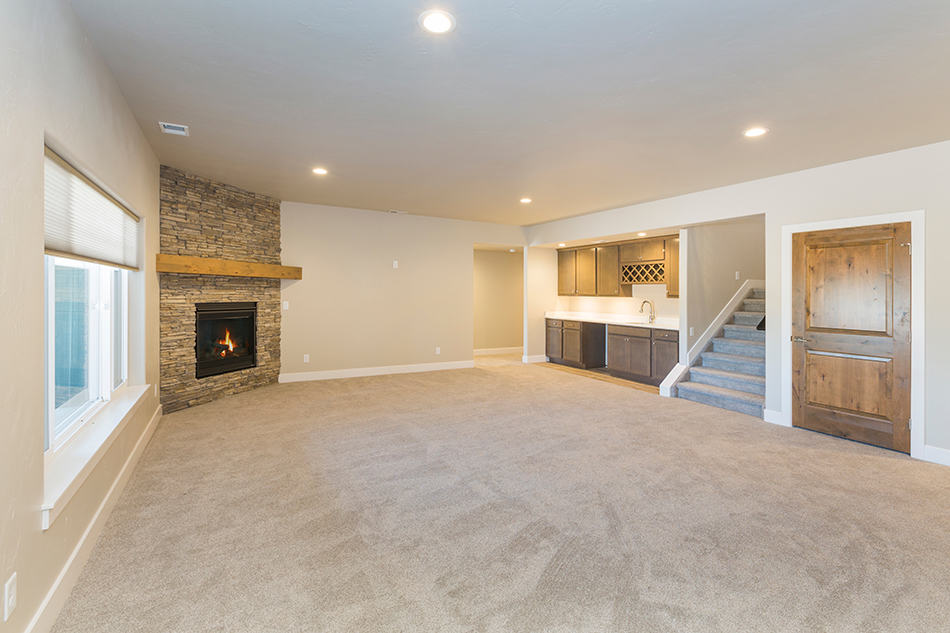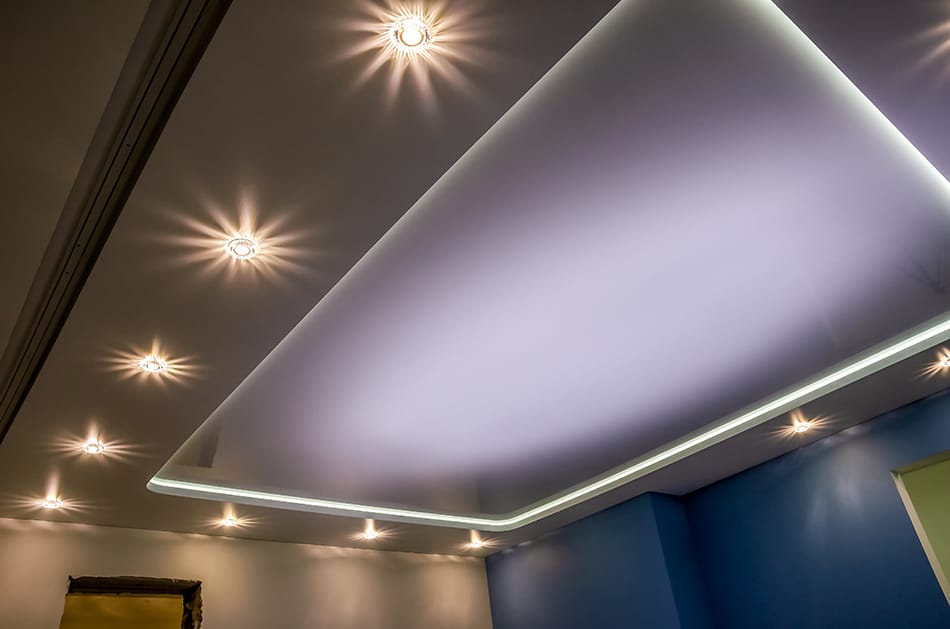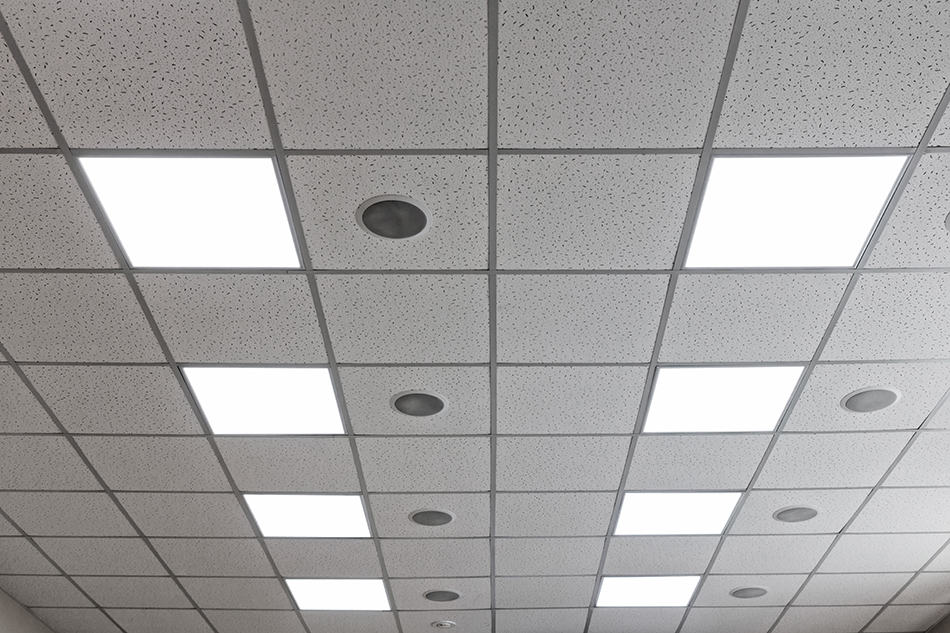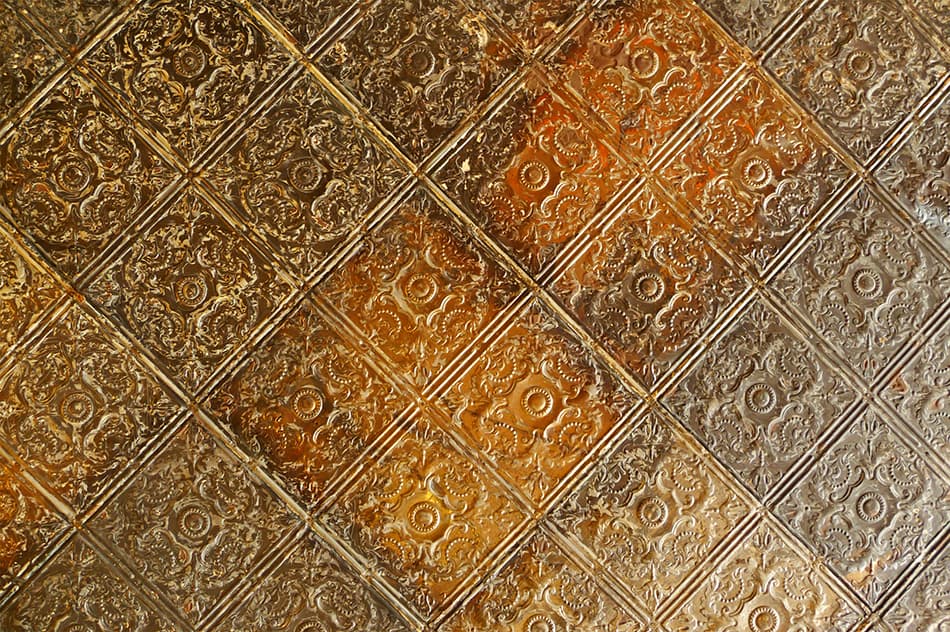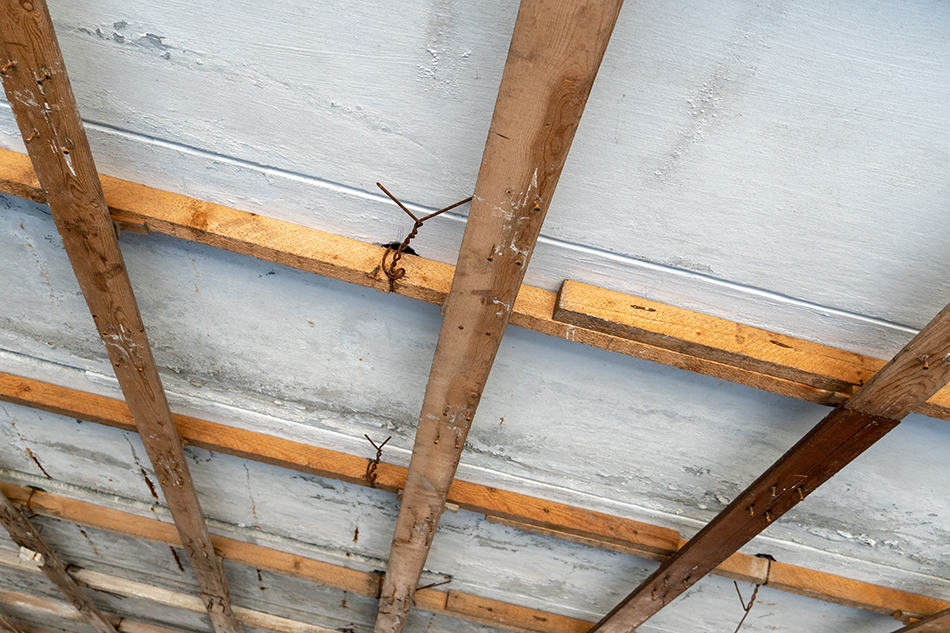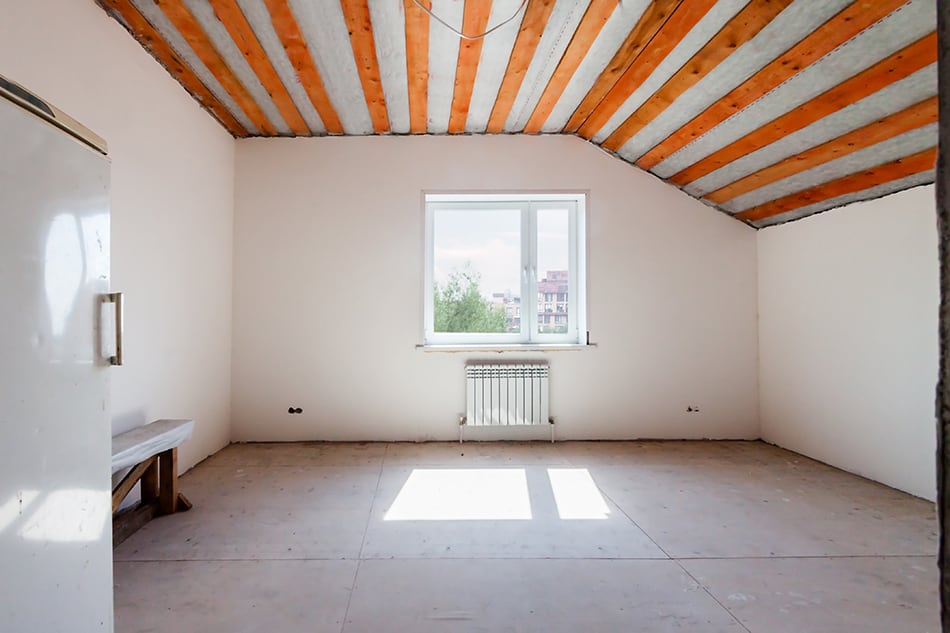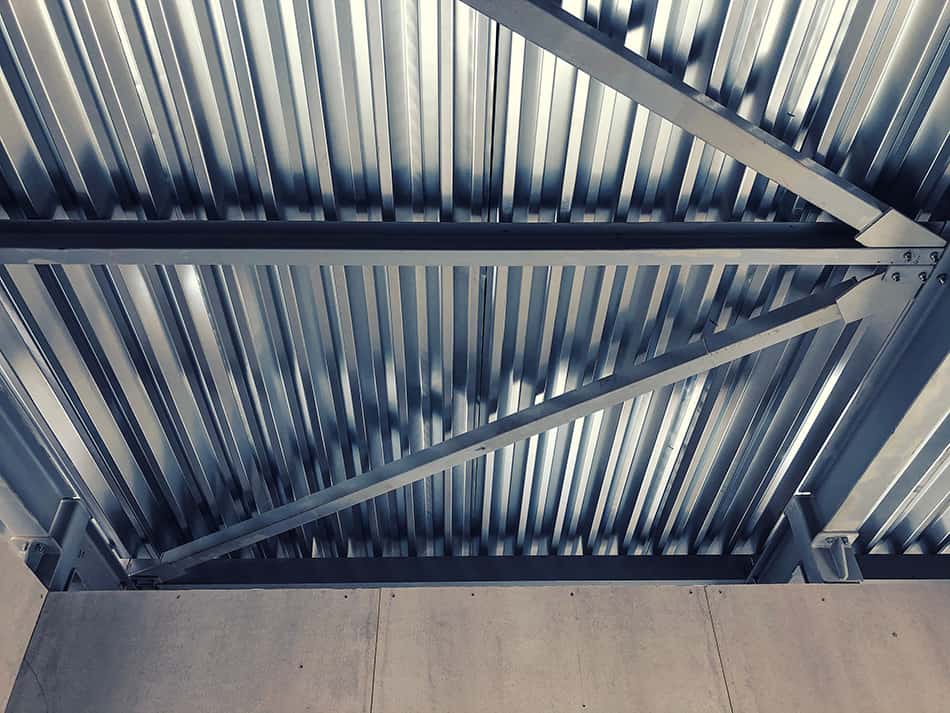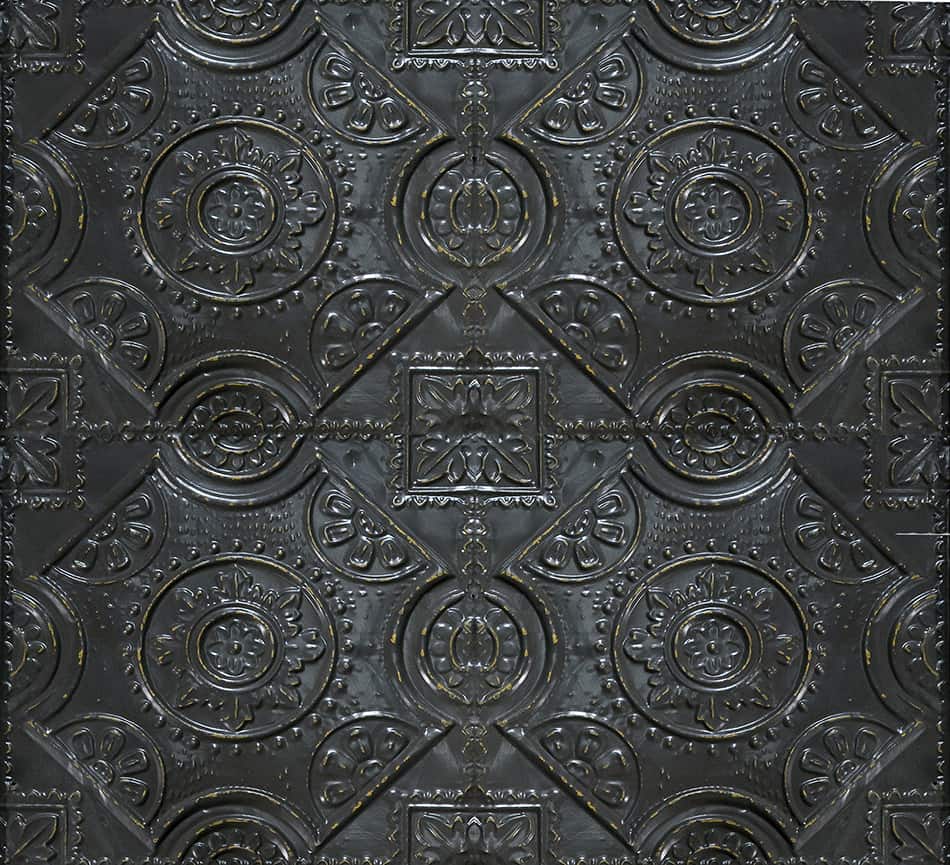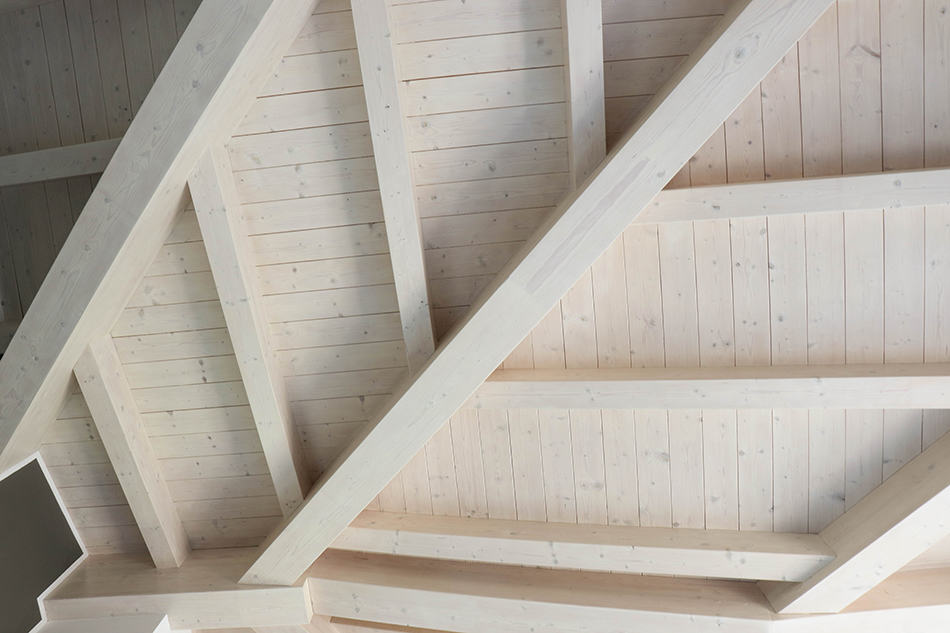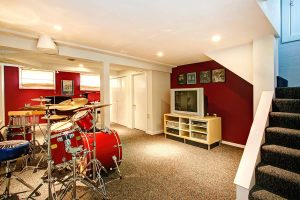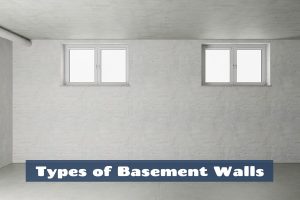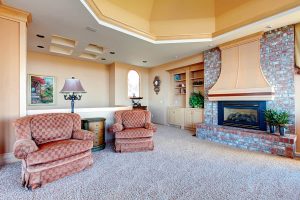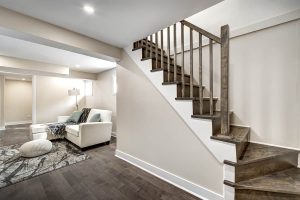In terms of basement ceilings, a lot of homeowners only think of two options, which are dropped and drywall ceilings. However, there are several types of basement ceilings.
Remember, your basement is a casual area of your home. As such, you can experiment and try decorative ideas for your basement ceiling. To help you choose, here are the different types of basement ceilings.
Stretch Ceiling
A stretch ceiling is a type of dropped ceiling, and it has two basic components, a lightweight fabric membrane, and a perimeter track. Typically, a PVC fabric is used for this type of ceiling, and it is installed on the perimeter track.
One advantage of opting for a stretch ceiling is that all types of light fixtures can be attached to it. Aside from that, many basements have a problem with high humidity. With this type of ceiling, you don’t have to worry about it getting damp. Lastly, a stretch ceiling is also easy to install. In fact, you don’t have to move any objects or furniture to install it, plus it won’t make a mess.
Despite its great qualities, a stretch ceiling is expensive. Even so, you’ll get all your money’s worth because this type of ceiling is one of the most beautiful ceilings you can install. To be specific, it can make your basement visually appealing.
Suspended Ceiling
A suspended ceiling is a secondary ceiling that is suspended from the floor slab, creating a gap of about three to eight inches. Typically, this type of ceiling is popular in commercial buildings because it can conceal unsightly wires. But it is also suitable as a basement ceiling.
Many homeowners opt for a suspended ceiling because it is easy to install. All you need to do is to make a metal frame and hang it on the ceiling joists. From there, you can start installing the tiles. Placing the metal frame on the ceiling joists may require some effort; however, once it is installed, the next steps are easy to do.
Aside from easy installation, a suspended ceiling doesn’t cost much. As such, you’ll have a fantastic-looking ceiling without spending too much money.
Acoustic Ceiling
An acoustic ceiling is a type of suspended ceiling wherein metal strips are installed from the actual ceiling. From there, sound-absorbing tiles, like mineral fiber, are placed into the metal strips.
Acoustic ceilings are not only popular in commercial buildings. A lot of homeowners opt for this type of basement ceiling because of its numerous benefits. For one, acoustic ceilings are durable, versatile, and cost-effective. Plus, it can also conceal unsightly wires.
Aside from that, this type of ceiling is also designed to absorb sound. Remember, the basement is located on the ground floor. As such, it is prone to various noises, such as stomping from the floor above. An acoustic ceiling can minimize or dampen these types of sounds, making your basement a quiet and peaceful area.
Another advantage of choosing an acoustic ceiling is that it is light reflective; thus, more light is reflected into the room. Through this, you’ll be able to save some money on utility costs. Best of all, acoustic ceilings are easy to install and clean.
Decorative Tile Ceiling
If you want your basement to be a fun area where your guests can hang out, you can opt for a decorative tile ceiling. Here, you’re going to install decorative ceiling tiles on a metal grid. Typically, ceiling tiles are made with mineral fiber, but they can also be made with other materials, such as fiberglass.
Aside from making your basement visually appealing, a decorative tile ceiling can also dampen the sound in your basement, especially if the tiles are made with sound-absorbing materials.
Decorative ceiling tiles are easy to install; however, they can be a bit expensive, depending on the type of tiles. When choosing a tile, you can either go with a simple design or go bold with a grandiose design. Either way, this type of ceiling will surely make your basement a fantastic place for you, your family, and your friends.
Drywall Ceiling
If you’re looking for a budget-friendly type of basement ceiling, you can opt for a drywall ceiling. As you know, drywall or plasterboard is a panel made of gypsum or calcium sulfate dihydrate. Aside from being inexpensive, the drywall material is also lightweight, especially if you pick a half-inch panel. As such, it can be a good ceiling material.
A drywall ceiling will make your ceiling look natural because it can blend with your walls, creating a uniform look for your room. For this reason, a drywall ceiling is recommended if you want to turn your basement into a guest room.
Despite being affordable, a drywall ceiling takes time and effort to install. Aside from that, drywall is not very durable. Nevertheless, it is still a good choice, especially if you want a natural-looking room that can be an extension of your home.
Wooden Plank Ceiling
A wood plank ceiling is a great choice if you want a visually appealing basement. Remember, wood possess a natural beauty that can add a touch of elegance to any room. This material is definitely a good choice if you want your basement to be an extension of your house.
If you have support beams, a wood plank ceiling will be easy to install. All you need to do is to purchase wooden planks and cut them into your preferred size. From there, you can install them on the support beams for a gorgeous-looking ceiling.
A wooden plank ceiling may cost more money, depending on the type of wood you’re going to use. However, there are some affordable wood planks on the market, so you don’t have to spend much on this type of basement ceiling.
Painted Wooden Plank Ceiling
A wooden plank ceiling is a beautiful basement ceiling you can opt for; however, if you don’t want the rustic vibe it exudes, you can always paint it. A painted wooden plank ceiling is also a good option if the wood that you have is not as nice as you expect them to be.
Keep in mind that wooden planks are already durable. Coating them with paint will not only make them more appealing. You’re also adding a protective barrier that can help them last longer.
When painting wooden planks, you can either do it before or after you’ve installed the planks. However, painting them before installation may result in the paint being damaged. So, it would be best if you paint the planks after installation.
When choosing paint for your wooden plank ceiling, you can opt for a neutral color. Most homeowners opt for white paint because it will only make the room more inviting. It can also make your basement appear spacious.
Corrugated Metal Ceiling
If you’re looking for a unique type of basement ceiling, you can opt for a corrugated metal ceiling. Compared to stainless steel metal sheets, corrugated metal has ripples or waves. This linear pattern is made through the process of hot-dip galvanizing and cold rolling. Because of this characteristic, your basement ceiling will surely look appealing and distinct.
A corrugated metal ceiling has an appearance that will make your basement visually appealing. However, this type of ceiling is best installed if your basement has wooden beams. You can put corrugated metal on the beams to make your room more interesting.
When choosing a corrugated metal, experts recommend opting for the type used for the roof for a more durable ceiling. Once you’ve purchased the metal sheets that you need, all you need to do is install them with care. You don’t have to coat the metal sheets with pain because they are already aesthetically pleasing on their own.
Box Ceiling
A box ceiling can be used if there are beams in your basement that are aligned the right way. This type of basement ceiling is a design element wherein the hollow beams are attached to the ceiling, creating a repeating box pattern.
To install a box ceiling, you’ll need to place ceiling panels between the beams. From there, the ceiling will appear a bit higher than the beams. The ceiling panels, on the other hand, will be secured above the beams.
Once you’ve installed the box ceiling, you can paint the beams and ceiling panels. You can opt for any shade that you prefer. If you want a simple yet elegant look, you can apply white paint. Additionally, you can also apply vibrant colors to make your basement look more enjoyable.
When properly installed, a box ceiling will turn your beams into a decoration instead of a necessary structure in your basement.
Tin Ceiling
A tin ceiling is a popular type of ceiling during the Victorian era. It is a design element wherein the ceiling is finished with tin tiles that have interesting designs pressed into them.
A tin ceiling is a good option if you want to turn your basement into a recreation area because it can accentuate the entertaining vibe you want to create. Aside from that, tin ceiling tiles can also reflect light, so you’ll be able to save on utility costs.
Installing tin ceiling tiles is not too laborious. Plus, it will surely make your room more appealing. However, this material is a bit expensive. Nevertheless, you’ll get all your money’s worth because they exude a beauty that can transform your basement into an extension of your house.
Painted Rafters
Some basements have rafters, and you won’t be able to remove the rafter. Instead, you need to come up with a good solution to make it look appealing. Some homeowners use the rafter for extra storage, so they don’t cover it.
One way to make a rafter look visually appealing is to paint it, which is easy to do. When choosing paint, a lot of people opt for a light shade to add life to the room. You can also opt for a muted color, such as gray, if you want to keep your theme neutral.
For wooden rafters, you can opt to stain the wood instead of painting them. Doing this will unleash the natural beauty of the wood, plus it will also make the rafter more durable.
Depending on your preferences, you can either choose a wood stain or paint. Either way, the result will make your basement more appealing.
Painted Beams or Pipes
If your basement ceiling has some beams and pipes, you want it to look presentable. Of course, removing the pipes and beams is not an option. Still, you can make your ceiling look appealing by painting them.
When picking paint for your ceiling, there are various options you can choose from. For instance, applying white paint can make your basement look neat and clean. Bright colors are also recommended because they can add life to your ceiling, especially if you’re going to turn your basement into an entertainment area.
Before applying paint, it is imperative that you clean the pipes and beams first, especially if they have rust. This process won’t take much of your time and effort, so you can still finish painting your ceiling in a matter of days.
Conclusion
All in all, these are the different types of basement ceilings. As you can see, your options are not limited to drywall or dropped ceiling.
There are various types of ceilings you can install to make your basement more appealing. For instance, if you are looking for a unique design, you can opt for corrugated metal ceilings. Wooden plank ceilings, on the other hand, are a great choice if you want to turn your basement into an elegant room.
